WHY IT MATTERS: Economic opportunity is the essence of the American Dream. It is based in the hope that communities can leverage their economic vitality to provide a better future for all, especially the next generation. Beyond what can be easily measured, economic opportunity flows from relationships, community building, and shared prosperity.
In a measurable way, “economic opportunity” is about jobs – job quality, compensation, and security. But economic opportunity has also meant something more. For some, economic opportunity is the hope that their children will achieve a stronger standard of living than they ever experienced. For others, economic opportunity comes from the experience of inclusion and fairness in their community and jobs – their ability to do more and feel valued for their contribution.
Economic opportunity in the U.S. starts in the labor market, and unemployment is one key measure of this opportunity at the local level. When SWCA’s job base is falling or stagnant, more people seek work but cannot find it. Those with jobs feel less secure about asking for a raise or even time off to attend a parent-teacher conference. When the economy is creating jobs, unemployment falls, and workers have greater opportunities to not only find work but to improve the quality of that work. Fortunately, unemployment has been inching downward. At 6.4% the unemployment rate in Wood County is just above the state rate (6.0%) and is coming closer to national levels experienced in the early 2000s.
Understanding economic opportunity in SWCA also requires attention to the types of jobs that we have. With one in five workers, manufacturing remains the dominant sector of employment (exceeding the state share of 18%). The region also has a notable concentration of information jobs (5.6% in SWCA compared to 2%). Mostly due to our strong manufacturing base, industries that require workers to have significant training in STEM fields (science, technology, engineering, and math) account for more than 40% of employment in the region, slightly higher than the state average.
How can we create economic opportunity for all—so that today’s residents and future generations don’t just find a job and earn a wage, but so they thrive?
Economic opportunity is closely tied to what workers earn at their jobs. Perhaps no surprise but the data make it clear that education pays. In SWCA, the median worker with less than a high school degree earns just under $20,000 per year. Median earnings rise to $33,000 with either an associate degree or some college. A four-year degree or more pushes the median to over $35,000. Interestingly, however, local bachelor’s holders (median of $38,000) seem to face a significant wage penalty for their location. The state median for bachelor’s degree holders is $47,000. Like many rural communities, our bachelor’s degree workforce may be concentrated in occupations with lower pay. But the bachelor’s degree wage differential is a challenge for our community.
In SWCA, we face many of the same economic headwinds that confront the nation. Two changes are challenging most communities. The first is the stagnation, even decline, of income for most families over the last decade. The second is the increasingly unequal distribution of family income. Income is surging ahead for those at higher income levels and stagnating for the middle class. And the poor have generally fallen further behind. These trends are not unique to our community, but are quite evident and challenging for extending opportunity to all in our region.
Median household income was the current equivalent of $58,000 in 2000 and has fallen to only $49,000 today. That presents a significant challenge to families – to the ability to pay bills and to feel any sense of economic security. But this is not equally true of all households in SWCA. For the half of households in the region with annual income above $50,000, there may be some stress but basics are covered. The one-in-three households with an annual income below $35,000 often experience more severe economic stress left to work multiple shifts, juggle second jobs, and rely on friends, family and neighbors.
What can we as a community do, that no family can do on its own, to reduce the costs of living: housing, energy, healthcare, childcare, and transportation?
With wages failing to keep up with inflation and few additional hours to commit to work, families increasingly face difficult choices each month just trying to cover costs. The BEST wage is defined as the minimum hourly wage for different family types in Wood County to meet the costs of living without social or public assistance. Using local costs for a single worker supporting two young children, the BEST wage shows that the worker must earn about $25.97 per hour (including benefits) to be self-sufficient. While education pays, most one-earner families have a difficult time meeting the self-sufficiency threshold.
Economic conditions are leaving too many behind. It is often young families with children in school, who experience significant financial stress. But wages and hours of work are not the only ways to improve our economic circumstances. There are many things that we can do collectively that no family can do on its own. Local communities across the nation are improving the lives of their residents by working together to systematically reduce the costs of living: housing, energy, healthcare, childcare, and transportation.
Housing and healthcare costs often account for the largest portion of a family’s budget. Data on the cost of living in SWCA present both good and challenging news. Median housing values are well below the state and national medians at $118,000 compared to Wisconsin at $169,000 and the nation at $181,000. While Wood County residents enjoy high quality healthcare and rates of insurance coverage, these come at a cost. Our residents and businesses tend to pay high premiums for health insurance coverage. Since 2000, the region has seen a 203% increase to an average monthly premium of $758 for a single person in a large group policy (usually employer provided).
Commute time also raises a family’s cost of living, and since 2002, finding economic opportunity has led to a longer commute for many SWCA residents. One measure of this is that 23% of SWCA workers traveled 25 miles or more to get to their primary job in 2002. Almost a decade later, 30% of SWCA workers went to these lengths for work. Another measure of this is that the number of SWCA residents working locally fell from 46% in 2002 to 38% in 2011. Outflow of SWCA workers increased by 3% during the same time period resulting in just over 10,000 residents traveling outside the region for work. Our workforce is increasingly tied to a broader regional economy, and families are increasingly facing the stress and costs of working outside the local area.
If commuting is the reality, how can we support workers in order to retain them as residents of our community?
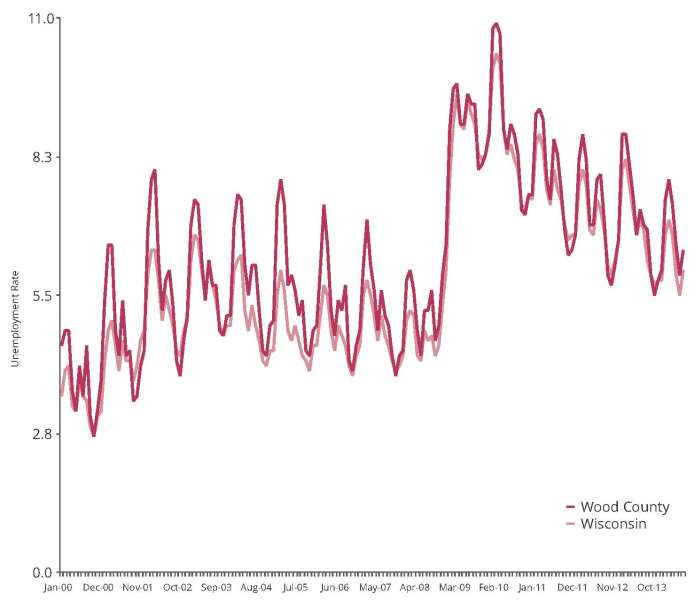
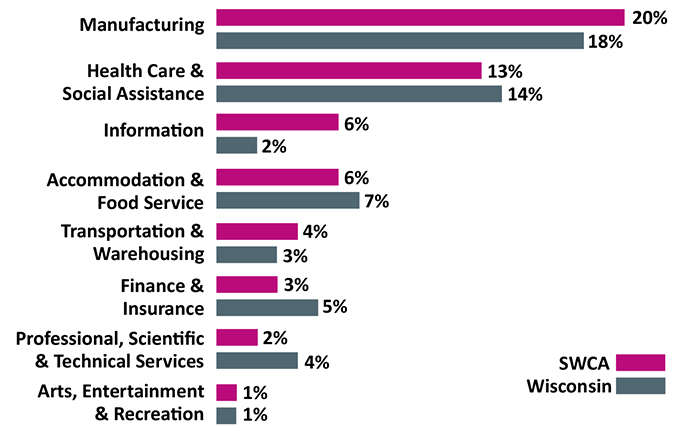
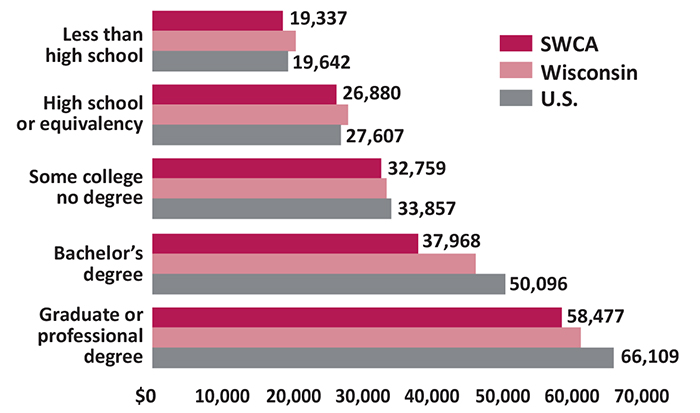
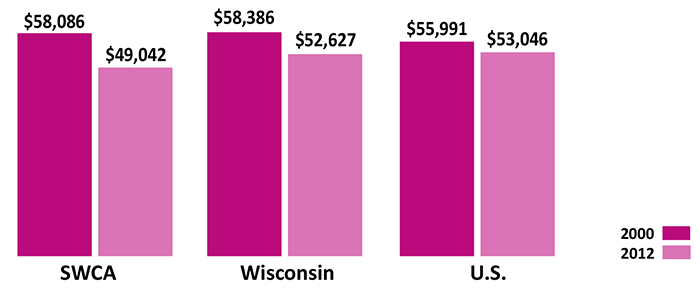
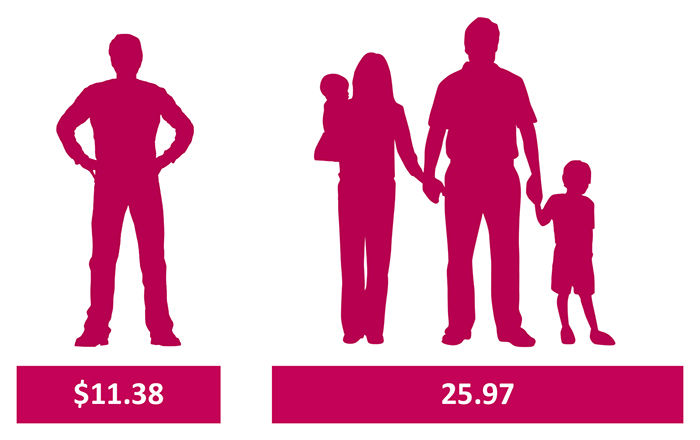
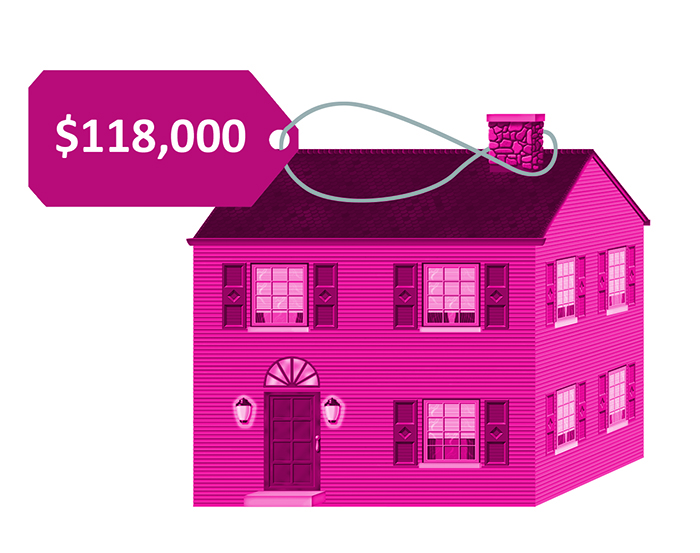

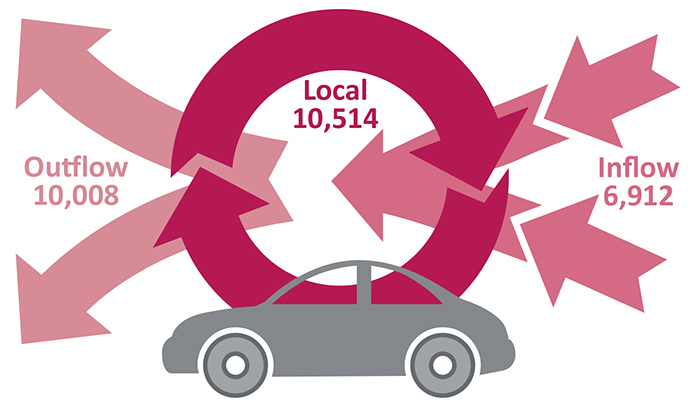
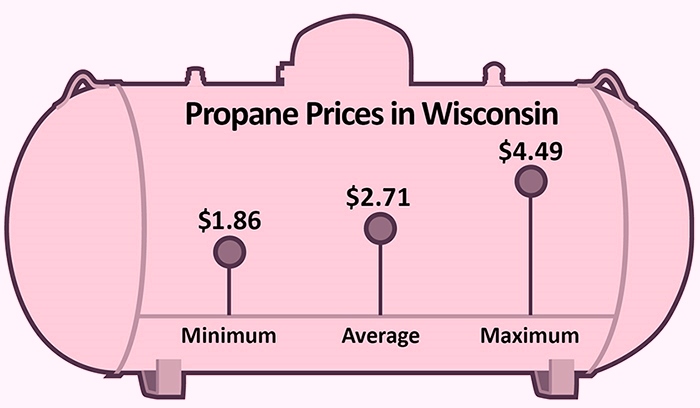
Vital Signs covers the south Wood County area of Wisconsin, including the municipalities of: Biron; Cranmoor; Grand Rapids; Nekoosa; Pittsville; Town of Port Edwards; Village of Port Edwards; Town of Rudolph; Village of Rudolph; Saratoga; Seneca; Sigel; Vesper; Wisconsin Rapids; and Rome in Adams County.
For additional information, contact:
Incourage | [email protected] | 715.423.3863
We’d love to
hear from you.